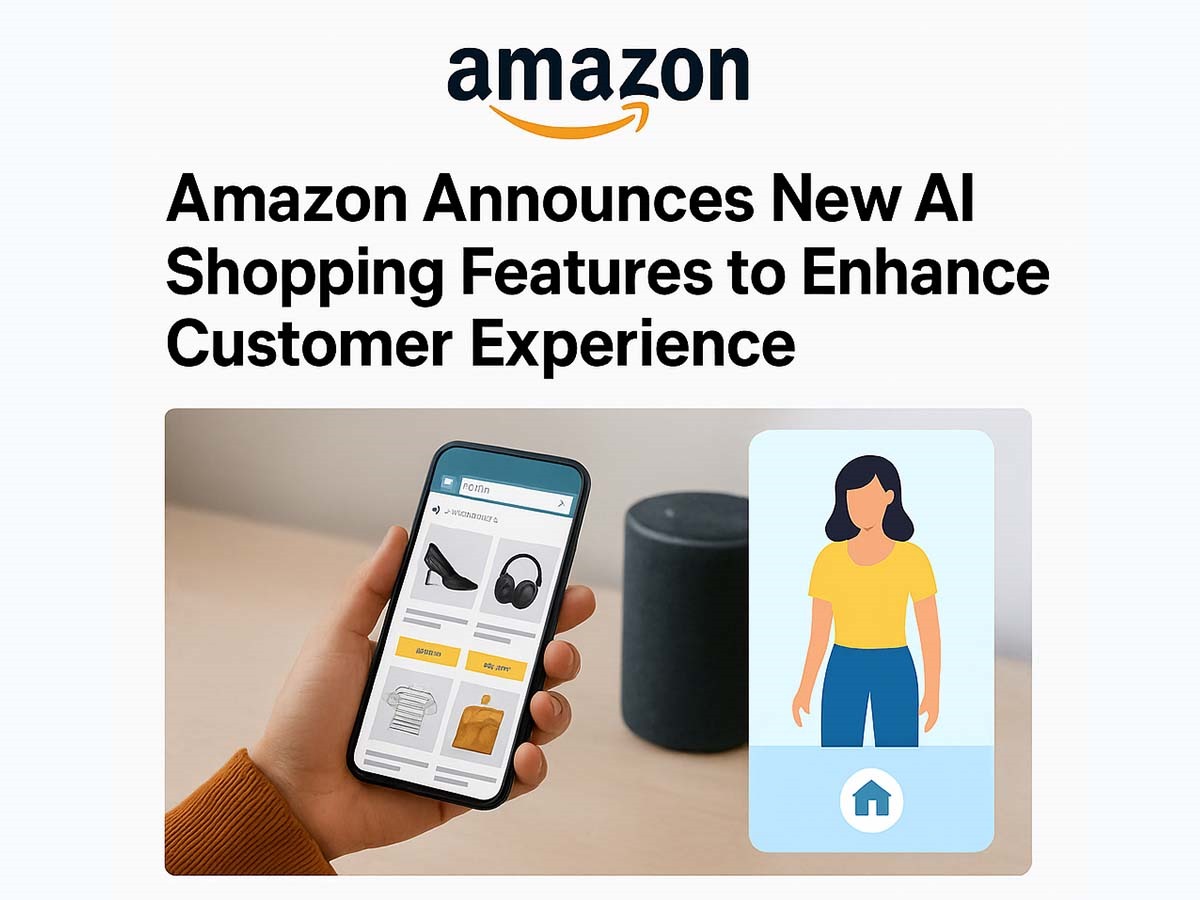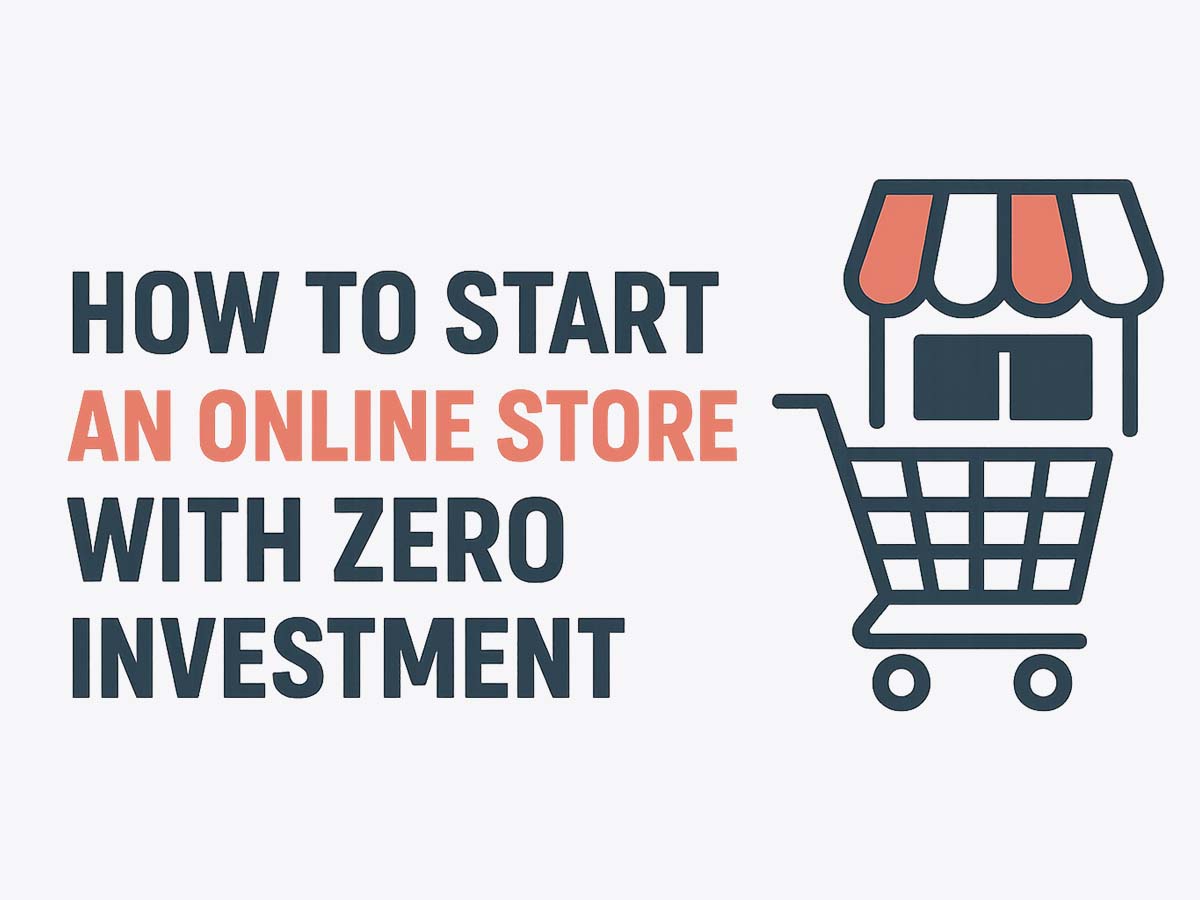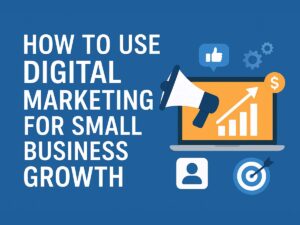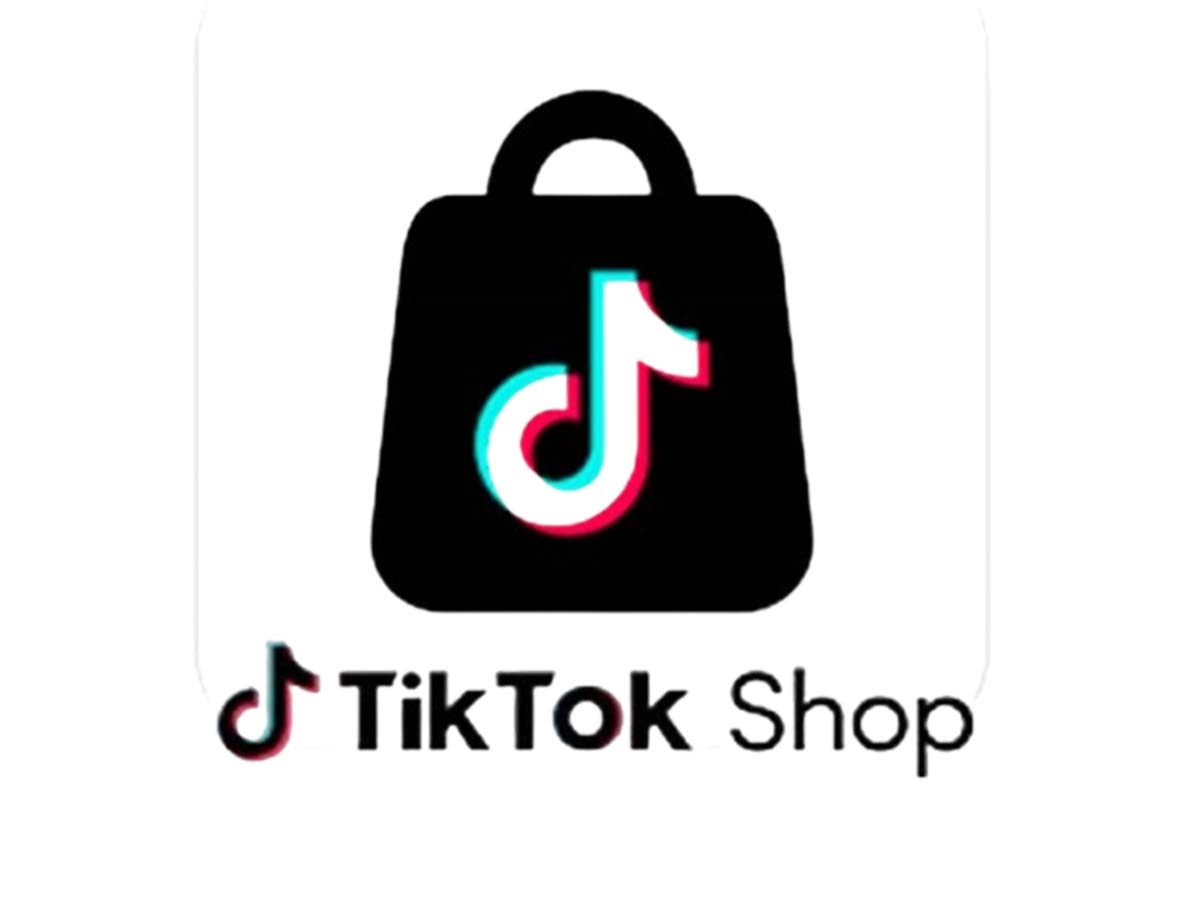Shopify Launches New AI Tools and New Features
What Merchants Need to Know in 2025
Table of Contents
- Introduction
- Why AI Matters for E-Commerce in 2025
- Overview: Shopify’s Summer ‘25 / Horizons / Edition Updates
- Deep Dive: New AI Tools
- Other Major New Features Beyond AI
- How These Updates Affect Different Types of Merchants (Small, Medium, Large)
- Strategies to Leverage These Tools for Growth
- Challenges, Risks, and Best Practices
- SEO Implications & Content Marketing Tips
- Future Trends Shopify Might Move Towards
- YouTube Videos & Resources
- Conclusion
1. Introduction
The landscape of e-commerce is evolving rapidly. In 2025, what once seemed cutting-edge (chatbots, AI-powered product recommendations, dynamic pricing) is becoming standard, and merchants are expected to deliver personalized, efficient, and visually engaging shopping experiences. Shopify, one of the world’s leading e-commerce platforms, is responding strongly. Their Summer ‘25 (also known as Horizons / Edition) update brings a suite of AI tools, design upgrades, checkout & logistics improvements, marketing enhancements, localization, and much more.
If you run a Shopify store (or plan to), these new tools can be transformative—speeding up store setup, improving conversion, reducing friction, enabling better customer experiences, and potentially giving you an edge over competitors. This blog walks you through what’s new, what you can do with the tools, what to watch out for, and how to plan ahead.
2. Why AI Matters for E-Commerce in 2025
Before diving into specifics, it’s helpful to understand the broader context:
- Customer Expectations are rising. Shoppers want personalized experiences: product suggestions tailored to them, fast & smooth checkouts, clear visuals, and on-brand storytelling.
- Speed & Efficiency: Many tasks that used to take hours or days (e.g. creating store design, writing product descriptions, setting up marketing campaigns) are now being automated or assisted by AI, freeing merchants to focus on strategy.
- Competition & Saturation: The barrier to entry for e-commerce is lower than ever. To stand out, brands must differentiate via design, service, speed, and experience.
- Cost Pressures: For many merchants inflation, rising ad costs, logistics costs etc. mean looking to streamline operations. AI tools help reduce some operational burdens.
- Globalization & Localization: Expanding into new markets requires handling local currency, shipping, languages, compliance. AI helps scale the adaptation.
Shopify has recognized all these trends, and its latest set of features is oriented toward helping merchants adapt, scale, and compete in this new environment.
3. Overview: Shopify’s Summer ’25 / Horizons / Edition Updates
Shopify’s biannual “Edition” announcement for Summer 2025 (also referred to in the context of “Horizons”) introduces 150+ new features with a strong focus on AI, merchant usability, global expansion, checkout and payment refinements, theme/design improvements, and tools that reduce friction for both merchants and customers. TechCrunch+3On Tap+3Mainfactor+3
Some of the headline initiatives are:
- AI-powered store building (AI Store Builder) — generate full store layouts from descriptive prompts. Reuters+2Forest Shipping+2
- Theme/design upgrades via the new Horizon theme foundation, with theme blocks, modular layout, AI-driven layout customization. Mainfactor+2Forest Shipping+2
- The expansion and improvement of Sidekick (Shopify’s AI assistant) to do more: analytics, campaign suggestions, voice chat, multilingual support, image generation etc. Shopify+3TechCrunch+3Mainfactor+3
- Shopify Magic – content generation: product descriptions, email campaigns, blog content, copywriting, image editing etc. Already present, but further improved. Shopify+2Shopify+2
- Upgrades to checkout and payment flows: smarter / unified carts, flattening friction in split-fulfillment orders, supporting new payment methods, local currency, simplifying shipping & duties etc. Mainfactor+2On Tap+2
- Localization & global commerce features: multi-entity stores, support for more countries / currencies / languages, regional storefronts etc. Mainfactor+2Shopify+2
- Enhancements in marketing tools, admin performance, developer tools / APIs. On Tap+2Retail Brew+2
4. Deep Dive: New AI Tools
Below is a detailed look at the major AI features, what they do, and how to use them.
4.1 AI Store Builder
What it is:
The AI Store Builder lets merchants generate complete online stores using only descriptive keywords/prompts. You specify what you want: style, product category, design cues. The AI produces fully functional layouts: pages, images, text content, product layout etc. Reuters+2Forest Shipping+2
Key points:
- It generates three store layouts per prompt so you can choose one to refine. Reuters
- Designed to reduce setup time and make store creation accessible even for those without design or coding expertise. Reuters+1
- After generation, you still have manual control: customize the theme, tweak design, adjust content etc. It’s not fully automatic in terms of branding / tone etc. Merchants need to review and personalize. eesel AI
Use cases / Who it’s best for:
- New merchants who are starting a store and don’t have design or dev resources.
- Merchants doing relaunches or seasonal microsites who want a quick layout.
- Agencies who want to prototype stores quickly for clients.
Potential limitations:
- Less suited for stores with highly custom or complex requirements (e.g. custom apps, unusual UX flows).
- Generated designs may look generic unless refined and personalized.
- Accurate imagery / product photos still matter; the tool likely uses stock or AI generated images initially.
4.2 Shopify Magic (Content & Media AI Tools)
What it is:
A suite of AI-powered content generation tools embedded in Shopify. This includes:
- Product description generation
- Email subject lines and body copy (Shopify Email)
- Marketing content / newsletter / blog first drafts etc.
- Media editing tools: image background removal, image styling, etc. Shopify+2Shopify+2
Improvements / New Capabilities:
- Multilingual support (copy generation in multiple languages) to help merchants in different regions. Shopify+1
- More “assistant-type” interactions: e.g. give tone, style, keywords to guide output. eesel AI+1
- More integration: content generation embedded in more parts of the workflow (theme editor, product pages, marketing). eesel AI+1
Use cases / best practices:
- Use Magic to generate drafts fast; then edit for brand voice, SEO, clarity.
- Use it for scaling content production (new product lines, sales, email sequences).
- For stores targeting multiple countries, leverage multilingual generation.
- For image-heavy stores (fashion, home decor): use image editing / background removal tools to improve visuals.
4.3 Sidekick (AI Business Assistant)
What it is:
Sidekick is Shopify’s more advanced AI assistant built into its admin/merchant tools. It goes beyond content generation: it can analyze store data, help with marketing strategy, campaign suggestions, image generation etc. Mainfactor+2TechCrunch+2
New features:
- Voice chat & screen-sharing capabilities. TechCrunch+1
- Multilingual support (help merchants globally). Mainfactor+1
- Better insights: sidekick can examine funnel metrics, performance, suggest what’s working and what’s not. Mainfactor+1
Use cases:
- If you’re unsure which product lines are underperforming, Sidekick can help you diagnose.
- Use it to help shape marketing campaigns, test offers, identify customer behavior patterns.
- For non-technical users, Sidekick can reduce dependency on external analysts or agencies.
4.4 AI Shopping Agents & Catalog Tools
What it is:
- Shopify Catalog: Early access for developers; allows building AI shopping agents (for example, integrations with platforms like Perplexity) that can discover and showcase your products via conversational AI. Shopify
- Knowledge Base App: Automatically generates AI-readable FAQ or policy content from store settings, allows customization, tracks what shoppers are asking to refine messaging. Shopify
- Storefront MCP (Model Context Protocol): Allows merchants/devs to build agents that use natural language interactions to guide shoppers: answering product questions, making recommendations, assisting checkout etc. Shopify
Use cases:
- Good for stores that want omnichannel presence (e.g. via AI chat tools, voice assistants, 3rd party platforms).
- Enhancing customer support and discovery, especially for stores with large catalogs.
- Improving conversion, because customers can ask questions and get assistance in natural language.
4.5 AI in Operations & Analytics
This includes things like:
- AI forecasting for demand, inventory. Shopify+1
- Smarter segmentation & marketing automation (Shopify Flow, improved audience definitions etc.). Shopify+1
- Insights via Sidekick or other tools to identify trends, behavior, what has worked.
5. Other Major New Features Beyond AI
While AI is the big headline, Shopify’s Summer ‘25 edition also brings a lot of non-AI (or mixed) improvements. These are important for performance, user experience, and global-scale operations.
5.1 Horizon Themes & Design Upgrades
- Horizon Foundation: new theme architecture with 10 ready-to-use themes. Debutify+1
- Theme Blocks & Modular Layout: design using blocks, more drag-and-drop ease. Users can design theme sections via AI-generated blocks if desired. Forest Shipping+1
- UI/UX improvements: hover-to-preview, collapsible sidebars, right-click shortcuts, predictive search, interactive product cards. Mainfactor+1
5.2 Checkout & Payments Improvements
- Flat-rate shipping options for split-fulfillment orders (so when different items ship from different locations). Mainfactor+1
- Enhanced fraud prevention & compliance updates (e.g. PCI DSS v4). Mainfactor+1
- More payment options (e.g. more support for Apple Pay, stablecoins in some regions) and localized payment methods. Mainfactor+1
5.3 Global / Localization / Multi-entity Store Support
- Language, currency, storefront localization for different regions. Mainfactor+2Shopify+2
- Multi-entity stores: managing several business legal entities / regional entities from one dashboard. Payouts in local currencies, baked-in duties/taxes etc. Debutify+1
5.4 Marketing, Discounts & Customer Engagement Tools
- Unified discount codes: codes that can apply across shipping, products, entire cart etc. Debutify+1
- Better segmentation and audience building; improved marketing automation. On Tap+1
- Shop App improvements: loyalty / follow features, personalized content, broader campaign reach. Mainfactor+1
5.5 Admin, Performance & Developer Tools
- Faster admin UI; performance improvements (Web Vitals, etc.). On Tap+1
- Refund-to-store credit options. On Tap
- Enhanced developer platform: improved CLI, Polaris Web Components, Storefront Web Components, better APIs. On Tap+1
5.6 B2B Features
- B2B Markets / support for B2B order flows: order minimums, VAT-ID validation, compatibility with NetSuite etc. On Tap
5.7 Shipping, Fulfillment & Operations
- More granular control over shipping zones and profiles. Mainfactor+1
- Smart order routing. Mainfactor
- Enhanced post-purchase experience: better order tracking, branded status pages. Mainfactor
6. How These Updates Affect Different Types of Merchants
Not all merchants will benefit equally, and some will need to change workflows. Here’s how the new tools apply depending on size, maturity, and resources.
| Merchant Type | Likely Benefits | Things to Plan / Be Careful About |
|---|---|---|
| New / Small Merchants (one-person, few products) | • AI Store Builder helps you get online quickly without dev/design costs. • Shopify Magic speeds up content creation. • Theme blocks and Horizon themes reduce dependency on design resources. • Automation (discounts, marketing) makes low-resource scale possible. | • Be careful: generic design or copy may not stand out. You’ll need to invest in brand identity. • Localization: even if tools support multiple languages, you’ll have to adapt content properly. • Ensure product assortment, photography, pricing are solid; AI tools don’t fix weak inventory or product-market fit. |
| Growing / Mid-Sized Merchants | • Better tools for scaling: Sidekick gives real insights, forecasts. • More global expansion possible: multi-entity stores, payment & shipping localization. • Marketing automations and better content pipelines reduce overhead. • Integrated checkout improvements can reduce cart abandonment. • B2B features or wholesale flows become more viable. | • Be ready to revise workflows: content, marketing, operations need to align with new tools. • Keep human oversight: brand voice, customer service cannot be entirely automated. • Monitor costs: some advanced payment / shipping features may carry fees. • Data privacy & regulatory compliance matters more when selling internationally. |
| Large / Enterprise Merchants | • Tools like AI shopping agents, Storefront MCP, advanced data insights and Sidekick become powerful for conversion optimization and experimentation. • The improvements in developer tools, APIs, theme customizability help scale custom UX and integrations. • Global & localization tools support multi-region strategy. • Smoother checkout & fraud prevention will help reduce losses. | • Integrating new AI tools into existing complex systems can be hard. Need to test before roll-out. • Ensuring consistency across international storefronts, languages, brands. • Having clear data governance, privacy, compliance for multiple legal regimes. • Balancing automation vs. human touch, especially in customer service. |
7. Strategies to Leverage These Tools for Growth
To make the most of Shopify’s new AI / Horizon / Edition updates, here are actionable strategies you can implement.
- Audit Your Store as of Now
- Check design, page speed, mobile usability. <br> – Review product content: descriptions, images, copy. <br> – Review customer feedback, common questions / support tickets. <br> – Check checkout & shipping flow; what drop-off points do you have?
- Use AI Store Builder as a Launchpad, Then Customize
- Use the AI Store Builder to get initial structure (pages, product layout, theme). <br> – Then invest time in polishing: brand visuals, unique content, photography, brand voice. <br> – Use Horizon themes / blocks to fine-tune UI/UX: ensure mobile experience is excellent.
- Leverage Shopify Magic Aggressively for Content
- For new product launches, generate multiple description drafts and test what works. <br> – Use Magic to generate email subject lines and body; test via A/B. <br> – For SEO, use Magic to help with meta descriptions, blog content; but always add human editing to infuse uniqueness and avoid generic outputs.
- Use Sidekick for Data-Driven Optimization
- Use insights to shape promotions: which products are trending, where are drop-offs, which customer segments are under-engaged. <br> – Let Sidekick help with campaign strategy, but overlay with your brand goals. <br> – Regularly review data, act on suggestions.
- Optimize Checkout & Payment Flows
- Use the new features: flatten friction, support multiple currencies, integrate payment options popular in your markets. <br> – Ensure shipping costs, taxes/duties, and delivery times are clearly communicated. <br> – Use fraud prevention tools to avoid chargebacks / lost revenue.
- Globalization & Localization Matters
- If expanding, use storefronts tailored by region: language, currency, culturally relevant content. <br> – Use local payment methods and shipping where possible. <br> – Adjust marketing messages to local preferences.
- Marketing & Discounting Strategy Upgrades
- Use unified discount codes; think creatively about shipping-based promotions, cart based offers etc. <br> – Leverage improved segmentation to send more relevant email / SMS / ads. <br> – Use Creator / influencer marketing (Shop Collabs etc) given improved tools.
- Operational Efficiency
- Use smart order routing, easier shipping zones, better fulfillment to reduce cost / delivery time. <br> – Streamline returns, branded post-purchase experience. <br> – Use admin / developer tools to improve site performance, reduce overhead.
- Ensure Brand Voice & Human Touch
- AI tools are powerful, but human editing, customer service, authenticity remain key. <br> – Customer support should use AI for routine tasks, but have humans for complex issues. <br> – Maintain consistent branding.
- Measure, Test, Iterate
- Track key metrics: conversion rate, average order value, cart abandonment, customer acquisition cost, customer satisfaction. <br> – Test different AI-generated designs/content vs traditional content. <br> – Gather feedback from customers.
8. Challenges, Risks, and Best Practices
No tool is perfect, and adopting AI / new features also involves trade-offs. Here are risks and how to mitigate them.
| Risk / Challenge | Why It Matters | Best Practices / Mitigations |
|---|---|---|
| Generic / Unoriginal Output | AI content or design can look similar across many stores; may dilute brand differentiation. | Always customize. Use AI output as draft. Infuse unique visuals, tone, story. Use high-quality product photography. |
| Over-Reliance on AI | Relying solely on AI suggestions or design might miss subtle UX issues or brand alignment; may lead to mis-messaged brand identity. | Maintain human oversight; user-test designs; review content. |
| Incorrect or Misleading Information | AI agents or Knowledge Base may provide wrong info to customers (e.g. about shipping, returns). | Review & edit AI-generated FAQs. Keep policies up-to-date. Monitor what customers ask, refine accordingly. |
| Localization / Cultural Issues | Automatic translations or region settings may not capture cultural nuance, local preferences. | If expanding, invest in good localization: human translation, local insights, adjusting visuals. |
| Cost / Hidden Fees | While many features are free or included, some payment / shipping features, premium support etc. may carry extra costs. | Read Shopify’s pricing, local payment provider fees, shipping costs, customs / duties. Model your costs ahead. |
| Regulatory & Data Privacy | Selling into multiple countries brings regulations around data, privacy, consumer rights, taxes. | Ensure legal compliance; have clear privacy policy; respect local laws on consumer protection; collect only needed data; secure data. |
| Technical Debt | With multiple upgrades, customizations, theme changes, there’s risk of performance issues, slow load times, compatibility problems. | Use performance monitoring (Web Vitals), test theme changes, ensure clean code, use lightweight themes/components. |
9. SEO Implications & Content Marketing Tips
Given these updates, Shopify merchants can sharpen their SEO & content strategy to benefit.
- Use AI to Scale Content, but Keep it Original: Generate drafts (product descriptions, blog posts, FAQs) with Shopify Magic, but ensure you edit for uniqueness. Use rich media (images, video) where possible.
- Optimize for Mobile & Performance: New Horizon themes and performance upgrades are likely to improve page speed and mobile usability — both are SEO ranking factors. Monitor Web Vitals.
- Localized SEO: With multi-region storefronts, use hreflang tags, localized content, local keywords. Translate carefully, adapt idioms.
- Structured Data: Use schema markup (products, reviews, FAQs) to help search engines and AI shopping agents understand your content. Shopify’s new AI shopping/catalog tools may better integrate structured data.
- Leverage Video: Product demos, theme walkthroughs, AI tool how-tos — video content tends to increase dwell time and engagement. Embed YouTube or video in blog pages.
- Content Clusters: Write long-form content around themes: comparing AI store builder vs manual design; guides on localization; case studies etc.
- Monitor Search Trends & AI Search: As AI search (“chat” or conversational search) becomes more common, optimize content for question-based/search query formats.
- Use Data from Sidekick / Analytics: Let data guide what content your audience is seeking; see what FAQs customers ask (via Knowledge Base etc.), and write content accordingly.
10. Future Trends Shopify Might Move Towards
Based on what Shopify is building, here are possible directions & features to watch out for:
- Even more autonomous AI agents: tools that don’t just assist but take actions (e.g. create promos, reorder inventory, adjust pricing based on competition) with minimal input.
- Deeper integration of multimodal AI: combining image generation, video, and voice interfaces in the shopping experience. E.g. virtual try-ons, AR previews.
- Smarter voice commerce / conversational commerce: customers interacting via voice agents, chat agents that feel more natural.
- Further improvements in localization & cross-border trade: taxes/duties calculation at checkout, more localized payment & shipping options, better international customer experience.
- More powerful fraud detection / risk management tools built into Shopify.
- Greater use of AI in customer lifetime value (CLV) prediction, retention strategies, loyalty programs.
- Tools for sustainability & ethical commerce: carbon tracking, ethical sourcing, eco-friendly fulfillment.
11. YouTube Videos & Resources
Here are videos and external resources that help show these updates in action, tutorials, etc. Embedding these in your blog or exploring them will help you and your readers understand better.
- “Shopify Editions 2025 | 150+ New Features (AI IS FINALLY HERE!)” — a walkthrough of the Summer ’25 edition, focusing on AI tools, design and major features. YouTube
- (You might look for other tutorial / how-to videos, e.g. “How to use Shopify AI store builder”, “Using Sidekick for marketing insights”, etc.)
Some written resources:
- Shopify’s own announcement: “Expanding your AI Horizons, Summer ‘25 Edition”—gives the official view of the new tools. Shopify
- Shopify’s AI in E-commerce 2025: 7 Use Cases & A Complete Guide — for how merchants are using AI across operations and marketing. Shopify
- Articles from TechCrunch, Reuters on the AI Store Builder and other updates. TechCrunch+1
12. Conclusion
Shopify’s Summer ’25 / Horizons / Edition updates mark a significant moment in the evolution of e-commerce tools. With AI deeply embedded—from store building to content, from checkout to customer engagement—Shopify is pushing merchants toward a future where speed, personalization, and ease are central.
For merchants, the opportunity is huge: to launch faster, work smarter, reach more markets, and provide better customer experiences. But the key will be balancing automation with human creativity, maintaining brand uniqueness, and being thoughtful about localization, customer trust, and performance.
If you’re on Shopify, now is a great time to audit your store, identify the highest-leverage areas (maybe store design, content, checkout, or international expansion), and begin using the new tools. Even small improvements in conversion, speed, or customer satisfaction can have big impact when scaled.











1 comment